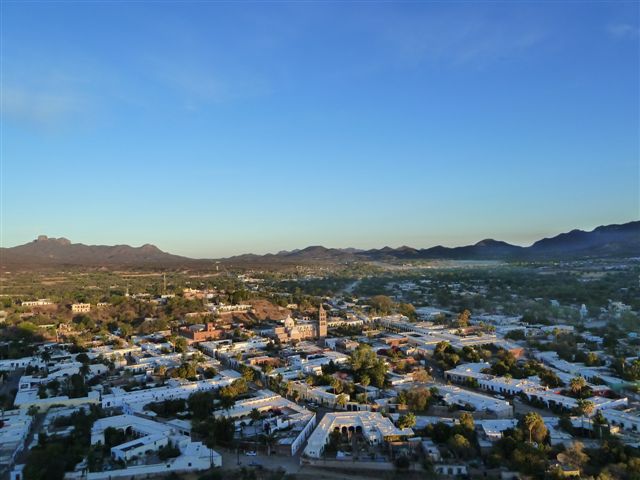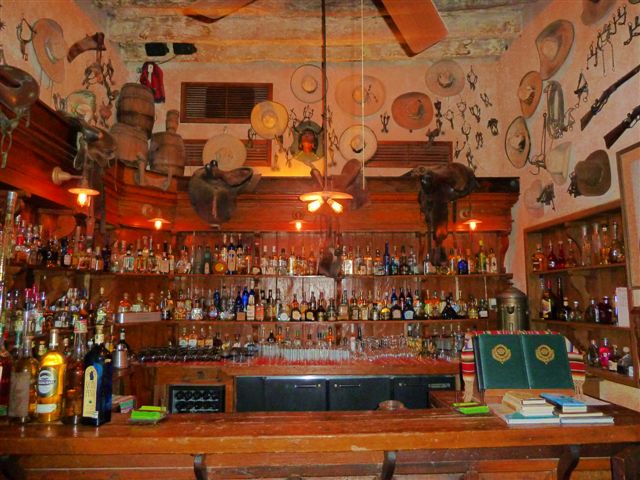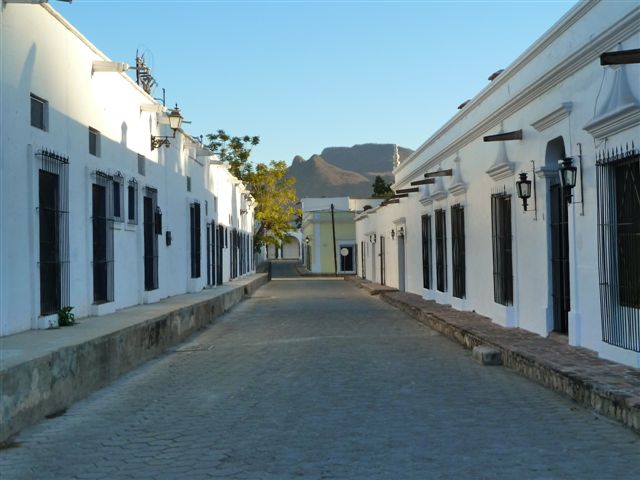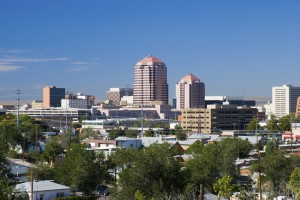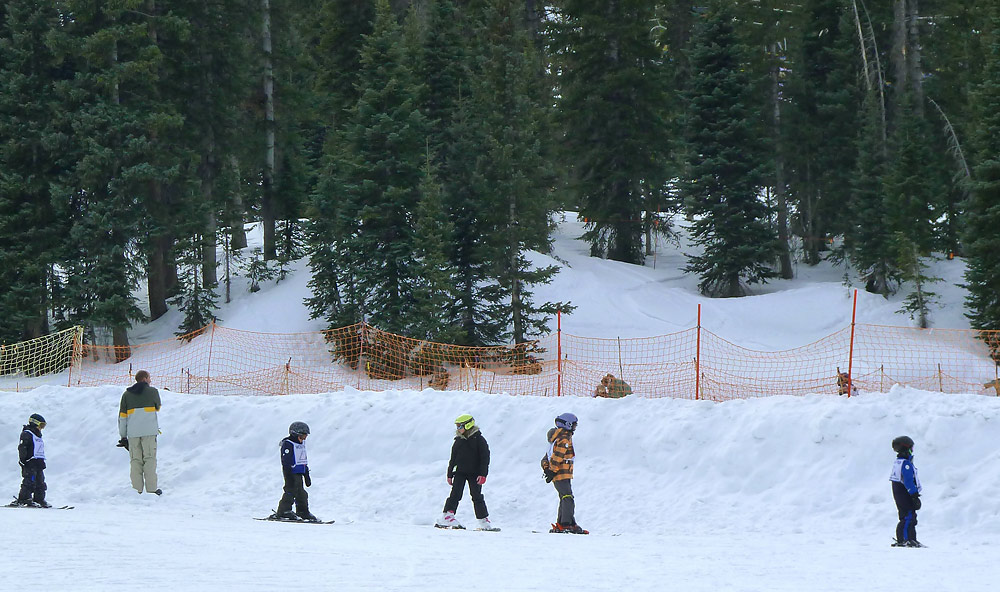PART TWO:
2011 REAL ESTATE MARKET SUMMARY
Results for 2011 improved in most categories. 507 closings totaling $114 million in sales were recorded for the year. During 2010 there were 400 closings for a total of $87 million. The total number of transactions increased 27% during 2011. Total dollar volume was up 31% from the prior year. We saw an increase in the number of homes sold and a decline in the number of units on the market at year-end. The negative impact of foreclosure properties is beginning to lessen as well as the number of foreclosure notices filed declined from 231 to 157. The number of loan modifications recorded was only down slightly from last year, at 71. This is significantly below the 177 loan modifications recorded in 2007 at the beginning of the downturn. Land continues to experience weak demand and an oversupply of inventory.
Residential- All Types
For all residential property categories, (stick- built detached, condos, townhomes, duplexes, mobile and modular homes,) there were 329 units sold for the year, versus a total of 251units for 2010, an increase of 31%.
Total dollar volume for residential sales was up 24% over the prior year, ($82.8 million versus $66.8 million for 2010). Year- end inventory count for 2011 was reduced by 31.5%, with 400 Active Listings on 12/31/2011 as compared to 526 at the end of 2010.
Residential- Single Family Detached
A total of 252 single family homes (stick built) were sold during 2011, versus 206 units during 2010, an increase of 22.3%. Total dollar volume was $74.6 million for the year as compared to $61.5 million for 2010, an increase of 21.3%. At year-end the number of unsold homes remaining on the market declined by 27% over the prior year, (298 units vs. 378 units at the end of 2010).
Residential High-End
The upper-end of the residential market remains significantly over-supplied. There were 31 properties priced above $1 million remaining on the market at year-end. During 2010 there were 3 sales recorded above the $1 million mark. For all of 2011 there were 8 residential sales recorded above $1 million, indicating we have about 46 month supply of high-end homes going into 2012.
Residential-Multi-Family
There were 40 condo/townhome sales closed during 2011, an increase of nearly 43% over the 28 sales recorded for 2010. The total dollar volume of $5.3 million for 2011 was up 36% for 2011 over 2010 total dollar volume of $3.9 million.
Commercial
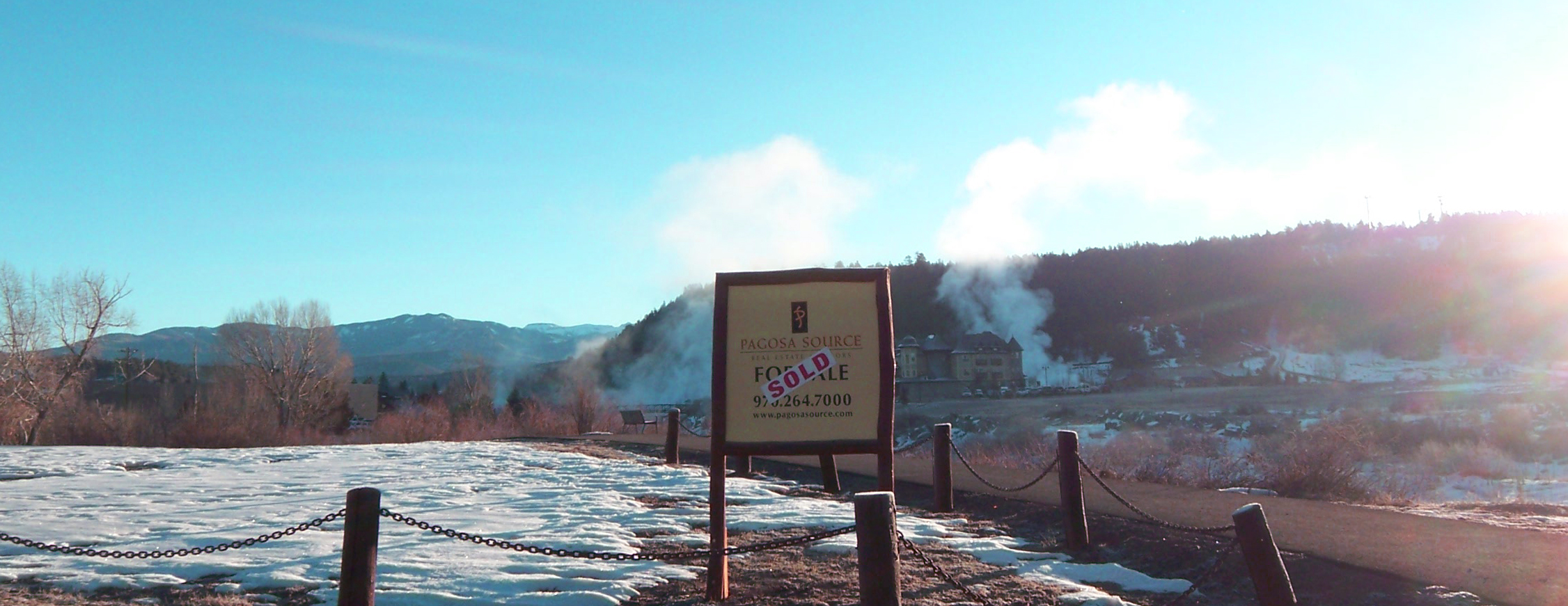 For 2011, the downtown properties formerly owned by David Brown made up the largest portion of the sales closing during the year.
For 2011, the downtown properties formerly owned by David Brown made up the largest portion of the sales closing during the year.
As mentioned above, our firm handled the bulk sale of the BJM Property Portfolio to a Nevada company, as well as the breakup and remarketing of 22 of the 24 properties. Sold properties included the two acre site at the base of Reservoir Hill, the former Kleckner home and adjacent vacant land on 1st Street, the three lots of the former Ampride site at the northeast corner of Pagosa Street and 1st Street, the former Bolt property next to the Pinewood Inn, the Alley House Building (home to the Alley House Grill) and adjacent vacant tracts, the vacant sites approved for the Three Lanterns Boutique Hotel just east of Handcrafted Interiors, the Poma property next to the county courthouse, the San Juan Plaza, the Sielstad Building (new home to Pedal and Powder) and the two vacant tracts above the river on east of 6th Street.
For the year ended 12/31/2011 there was a total of 23 commercial property closings, with total dollar volume of $5.3 million, down 40% from $8.8 million in commercial property sales closed during 2010. There were a total of 23 commercial sales reported to the MLS for 2011 as compared to 21 reported in 2010.
During 2010, three major lodging properties changed hands. Pueblo Bank and Trust sold the San Juan Motel, listed at $1.9 million and selling for $1,275,000. The Pagosa Lodge, with a Listing Price of $4 million was sold for $2 million by the Nightingale family to Pagosa Lodging, LLC. Another noteworthy sale during 2010 was the Wolf Creek Run R.V. Park, developed by the late John E. and Phyllis Brown. It was sold for $1.2 million to MTTD, LLC of Eugene, Oregon. These three sales comprised $4.5 of the commercial sales total volume of $8.9 million closed during 2010. It is interesting to note that each of the sales involved financing provided by the Sellers, a sign of the continuing difficulty within the commercial lending environment.
Land
Land sales declined during 2011. Though the total number of parcels sold remained unchanged at 120, total dollar volume was down by 25% for the year, $7.3 million during 2011, as compared to $9.8 million in 2010. The inventory of land offerings at the end of 2011 increased from 871 to 936 Active Listings.
Land-35 Acre Tracts
For the year there were 9 sales recorded totaling $1.7 million. During 2010 there were 16 sales for a total of $3.7 million. At year end 91 listings remained on the market representing a 10 year supply.
Land-3-10 Acre Parcels
27 sales totaling $1.9 million were recorded for the year as compared to 22 sales totaling $2.5 million recorded during 2010. There were 183 parcels on the market at the end of the year, an 81 month supply.
Land- Small Lots (.15-2.99 Acre Home Sites)
The number of sales closed for the year remained unchanged from the prior year at 77 with $2.6 million in total sales. During 2010 sales totaled $2.7 million. 504 lots remained on the market at year-end. This represents a 78 month supply of home sites.
Conclusion
While it is true we are far from being out of the woods, the statistics indicate we are heading in a positive direction with a defined path out in front of us. A decline in available inventory, an increase in total sales, a slowdown in new foreclosures and change in ownership of a large number of downtown properties are all positive factors. In order for us to realize further improvements, we need more middle income Americans returning to our area and investing in our real estate. This requires a higher level of consumer confidence, which is today, largely a function of job creation and growth in household income. These factors will likely be slow in coming, regardless of the shape the national political landscape takes in the months ahead. In the meantime, as a community we can focus on harnessing more of the exceptional creative and intellectual capacity of our members to address the challenges that lie ahead.
If you have questions about any of the information presented, give me a call at 970 264-7000, or email me at:
MikeHeraty@frontier.net. You can access additional information within our website: www.pagosasource.com and on our blog site: www.southwestcoloradonews.com.
Thank you to all our clients and customers for your support during 2011.
Mike
Note: Information presented above was obtained for the CREN MLS for the Pagosa Springs Area Association of Realtors and internal data from Pagosa Source Real Estate Advisors. These sources are deemed reliable, but author does not guarantee the accuracy of the data. Some figures have been rounded.
PART ONE:
Another year is gone and the results are in the book. 2011 was a better year for the local economy, at least by most measurements. Yes, there still were too many foreclosures and too many distress sales, and many of our local businesses have continued to struggle as visiting tourists have not loosened up their spending as much as needed. Still, we have improved from where things were, especially when we compare figures from 2008-2010 to 2011.

There remains an abundance of commercial vacancies in town. Our firm, Pagosa RealEstate Advisors successfully closed on sales of 22 different commercial properties within the downtown and East Village area, formerly owned by BootJack Management and related entities. Nearly every property was purchased by locals or buyers that have vacation homes or ranches here in the area. Plans are being studied for the development of some of these properties in the near term and we think that is good for the entire community. These sales represent a solid vote of confidence in the long term viability of our area. The purchasers were successful business owners or professionals with significant achievements in the business world. None were first time investors, purchasing to flip the properties for a for short term profit.
Much has changed since David Brown attempted to move development forward in the East Village of Pagosa Springs and the mood and cooperative spirit among the Town Council and Administrators has improved significantly. A more sensible “pro-business”, pro-job-growth” philosophy seems to be developing. Perhaps there are some genuine regrets for having kicked the community’s former gift horse in the mouth.
With a high real rate of unemployment and the lack of much new construction over the last several years, community leaders have had to take a different approach to managing the future of our area. No doubt there will be substantial challenges ahead for the Town and the County, but I sense a stronger willingness to roll up our sleeves and do the hard work required to build towards a more sustainable and vibrant future. There is and will continue to be more controversy, whether it is related to the Big Box Retailers, the development of Reservoir Hill, county road maintenance or school facilities. I choose to believe our exceptional community will come up with solutions beyond what others might expect who believe we are nothing more than “average”. I strongly disagree with the opinion stated in the Pagosa Sun December 29th Editorial titled “A New Year in an Average Place” http://pagosasun.com/opinion.html I look forward to our community proving Karl Isberg is wrong in his assessment of Pagosa and its stakeholders.
Market stats will be published on this site tomorrow, January 2nd.
Many thanks to all our clients and customers for their support during 2011.
Mike
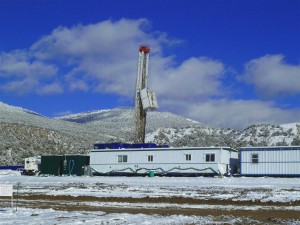
Gas Well Drilling Site Off Trujillo Road Where San Juan Flows Into Navajo Reservoir
BIG GAS WELL DRILLING PLAY IN ARCULETA COUNTY
A few days back I took a long drive down Cat Creek Road. The last time I traveled more than five miles down this road was when I was showing the Candelaria Ranch to a client from Boston, about five years ago. Not much had changed along most of the route. There are still many thousands of acres of dry grazing lands, what isn’t now part of the Southern Ute Tribal lands is mostly owned by the Gallegos, Espinosa, Pacheco and Padilla families that have been in the area for many years. It is still an area that suffers from a lack of good developed water resources. The limited amount of surface water draining through the area won’t support much crop production, nor will it provide good livestock grazing. There are a few places along the way where the creeks provide enough flow for shallow wells and some irrigation, but not many.
Decades ago, much of the land was home to thousands of sheep, but the sheep industry began to decline significantly after World War II and into the 1950’s. The loss of labor from World War II, changes in consumer preferences as well as the repeal of the National Wool Act all contributed to a substantial reduction in the size of the sheep herds grazing lands here in Southwest Colorado and across America. Today you are more likely to see large herds of elk and mule deer where once thousands of sheep grazed, watched over by descendants of the early Spanish settlers.
The scenery is still gorgeous and interesting; with large rock outcroppings, tall ridgelines covered with Ponderosa Pines and huge gently rolling grassy parks, divided by deep arroyos from periods of heavy rain and fast runoff.
As I traveled further south I passed the Espinosa, Pacheco and Padilla family lands before reaching Pagosa Junction. It was disappointing to see the old wooden water tower along the rail siding had collapsed, and few buildings were still standing on the site of the once thriving lumber town. Apparently the last of the descendants of the families that settled and ranched in the area have left Pagosa Junction, and time and weather have taken over. (I will write more about Pagosa Junction in later articles). The San Juan River quietly flows by what is left of Pagosa Junction on its way to Navajo Reservoir.
Continuing south below the merger of Cat Creek and Trujillo Roads, the scenery begins to change drastically. The county road has been widened and evidence of a major natural gas pipeline installation is seen parallel to the road. There are lines of survey stakes along the right side of the road. Ahead a bit further on the left is a large well drilling rig and an operations yard with job site trailers and RV’s for the oilfield workers. I steer to the far right of the road to allow several large low-boy trucks to pass with their cargo of huge tanks and drilling supplies. I pass half a dozen other trucks hauling materials, equipment and supplies to the drilling site. Driving ahead another 4-5 miles I spotted another large drilling rig and passed more oilfield service trucks heading to and from the second drilling rig. I continued to Highway 151 and drove south towards Arboles, pulling off the highway to look across the lake, back towards the drilling rigs. This is a big change for the neighborhood. My later research at the courthouse confirmed the drilling activity has generated a flurry of leases for land and mineral owners in the area. Additionally, far more than the two sites I viewed have been approved for well drilling. The big players in the area are Red Willow Production Company, an affiliate of the Southern UteTribe: www.rdpc.us and Energen, an oil and gas exploration and production company headquartered in Alabama. www.energen.com . You can view the location of the drilling activity and permitted drill sites from this link: http://www.eser.org/10-32n-5w-archuleta-county-colorado
What, if anything will this drilling and pipeline activity do for the coffers of Archuleta County? Will this generate any substantial taxes for our county? Given the distance from Pagosa, much is taking place outside the viewing range of most of our residents. Property owners in nearby Andrews and Piedra Park subdivisions and Arboles are watching closely. Changes in groundwater quality and quantity in the area will also become a concern as we have seen over the years in La Plata County. Perhaps more of the county property residents and owners should join in and keep and pay attention to what is developing. For information on real estate market conditions or properties available for sale, be sure to check our website:
www.pagosasource.com
THE EXTRA IMPORTANCE OF GOOD CUSTOMER SERVICE IN A TOUGH ECONOMY
While visiting the Pagosa Baking Company recently I encountered a group of six Hispanic women that were ordering food and coffee at the counter. As I often do with strangers, I asked where they were from and what they were doing in Pagosa. The spokesperson for the group, speaking perfect English responded that they were all from San Antoino, Texas, in town to enjoy early season skiing and snowboarding. She went on to explain that all the women were best friends or related and that they typically take 2-3 trips together each year. This was their first visit to Pagosa Springs. I asked them what they thought of our little town. Interestingly, she said the scenery was gorgeous, the food, especially at the PBS was great, as was the skiing, but that they were treated a bit rudely on several occasions when they revealed they were from Texas. She said they experienced this unfortunate reception on two occasions, once during a visit to a local store and the other time while eating in one of our restaurants; I might add it was not the PBS, Kips, Alley House, Farrago’s, or Summit Ski and Sports, ( I always look out for the merchants in my end of town.) Anyway, I assured them that what they experienced was rare, and certainly not the attitude the majority of the folks in Pagosa Springs have towards Texans, or visitors from any other state. I went on to explain that we love our tourists and want to be sure they have a great experience while visiting our area. She warmed up a little and went on to explain that they were a bit surprised at the rough reception because they live in an area of Texas that gets a lot of outside visitors and their community really encourages that and their Chamber of Commerce helps their merchants to improve their customer service with regular workshops, speakers and training. I did everything I could to give them the best face of Pagosa I could and encouraged them to not judge us by the two bad apples they encountered.
I recall, probably 8-10 years ago that the Downtown Merchants group in Durango had a presentation by a marketing consultant that gave them the results of exit interviews with tourists in the Durango region. The single common negative content in the feedback was poor customer service and attitude. I high number of respondents commented that they were often treated by clerks and wait staff as though they were an inconvenience. A lack of a friendly greeting and a seldom heard “thank you” at the end of a transaction were regular comments from survey respondents. Durango then when about to promote significant changes to their customer service. They started by empowering their business owners and their employees with an understanding of the importance of delivering excellent customer service, to all the patrons of its stores, shops and restaurants. I don’t recall following up, or whether Durango did a follow up survey, but, from my experience as a regular consumer and visitor in Durango over the last five years, I would say they made substantial improvements.
Here in Pagosa, we can all learn from my brief conversation with the ladies from San Antonio as well as the experience of business owners in Durango. We are a service oriented economy, driven by tourism. Our visitors are spending discretionary dollars that they can direct anywhere they wish. There are many communities here in the Rockies and elsewhere competing for tourists. If we want to attract them and get them to return in greater numbers, we need to treat them like gold. They have the economic power to make or break our community. If we really understand this relationship, we will all brush up on our customer service skills. There are plenty of resources available to help any business owner or conscientious employee in this area. Here are a couple:
Inc. Magazine Article:
http://www.inc.com/guides/improve-your-companys-customer-service.html
This article is like putting your mouth over a fire hydrant and cranking the valve open!
http://www.slideshare.net/Batjaa_sh/101-ways-to-improve-customer-service



